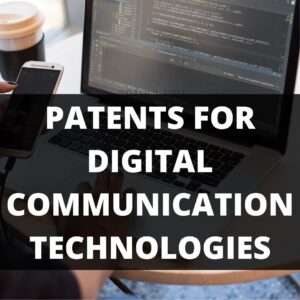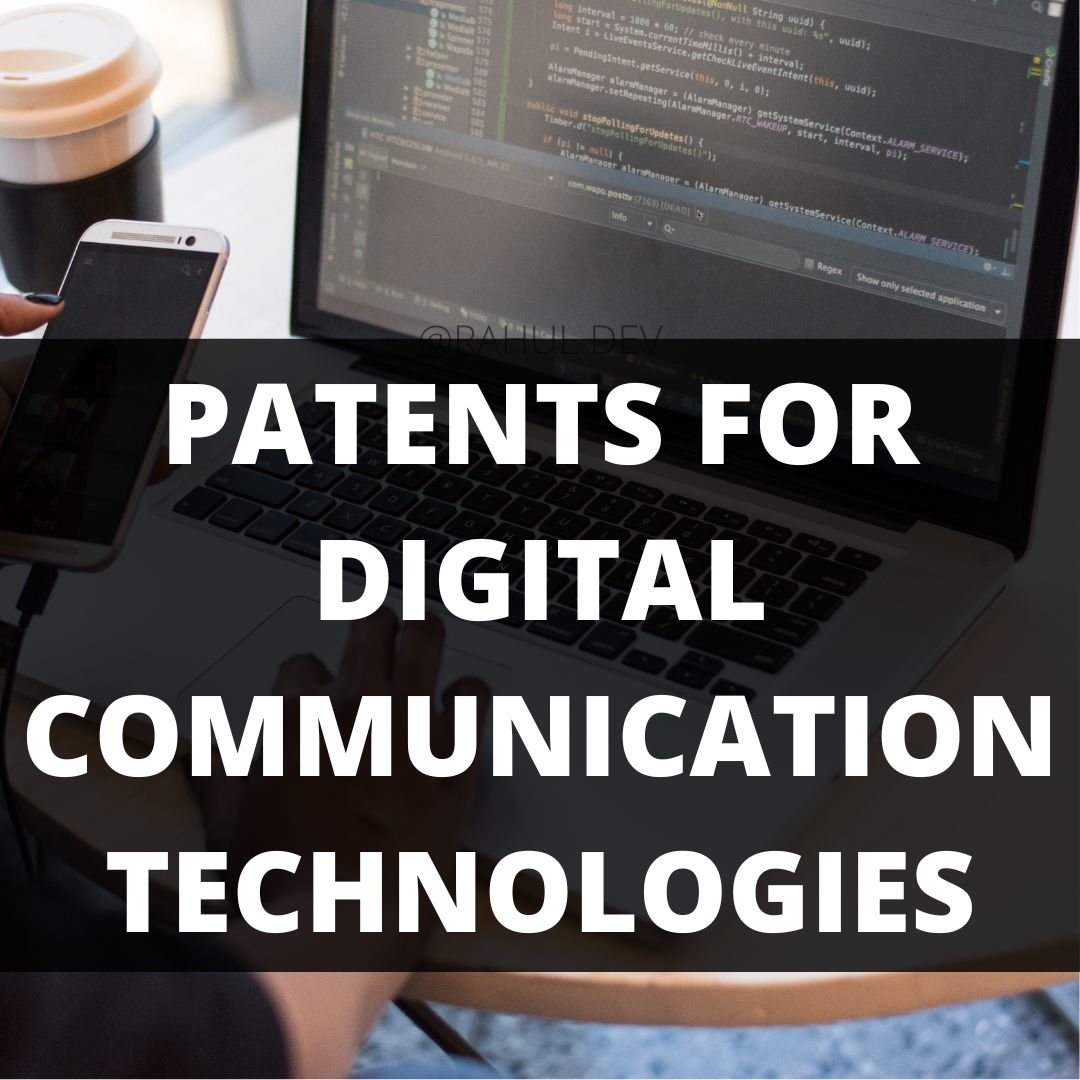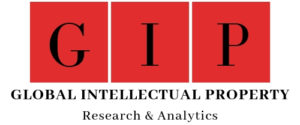Here I write about international patent filing process for computer technology innovations with strong patent claims. The international patent filing process for computer technology innovations operates primarily through the Patent Cooperation Treaty system. The PCT, administered by the World Intellectual Property Organization, enables inventors to file a single international application that covers multiple countries. This approach offers particular value for computer technology innovations due to their global applicability and the varying legal standards across jurisdictions.
The international patent landscape displays a dynamic array of technological innovations across imaging systems, artificial intelligence search capabilities, e-commerce solutions, multimedia processing, and three-dimensional generation tools. Research institutions and technology corporations utilize the Patent Cooperation Treaty to secure global protection for their intellectual property. The National Institutes of Health has developed a lens array imaging system with enhanced field of view capabilities, demonstrating how research organizations protect innovations with broad applications through international patent filings.
Google maintains an active international patent portfolio that includes several notable innovations. The SEMQA system combines verbatim quotes from multiple sources with free-text connectors to improve question-answering accuracy. This advancement reflects Google’s strategic emphasis on refining search engine capabilities with artificial intelligence. Their shopping query intent prediction framework employs LSTM networks and autoencoders to interpret user intentions during e-commerce searches. The contextual search on multimedia content patent facilitates entity extraction from videos and images to generate query rewrites without disrupting user consumption.

Tencent has emerged as a significant competitor in the generative artificial intelligence domain. The Chinese technology corporation unveiled a suite of tools in March 2025 capable of transforming text and images into three-dimensional visuals using their Hunyuan3D-2.0 technology. This development aligns with China’s increasing prominence in international patent filings, particularly for artificial intelligence innovations. World Intellectual Property Organization reports indicate Tencent has filed 2,074 generative AI inventions between 2014 and 2023.
The international patent examples reveal notable technological trends and regional differences in innovation focus. Artificial intelligence dominates recent computer technology patents, with China leading in generative AI applications while United States companies concentrate on search and e-commerce implementations. The Patent Cooperation Treaty serves as the primary mechanism for global protection, streamlining the process for multinational corporations and research institutions seeking international coverage. These innovations represent the cutting edge of computer technology development from 2024 to early 2025. Their international protection highlights the global nature of technological advancement and the strategic importance of securing intellectual property rights across multiple jurisdictions. The diversity of applications demonstrates how computer technology continues to evolve and transform various industries through targeted innovation and international collaboration.
PCT International Patent Application Filing
The PCT process follows a structured two-phase approach that begins with the international phase patent filing. During this initial stage, applicants must file their international application within 12 months of any priority date with either a national patent office or WIPO’s International Bureau in Geneva. Applications require a description, claims, drawings if necessary, and an abstract in an accepted language. This filing strategy provides inventors with a unified starting point rather than requiring separate applications for each target country.
Once the international patent application is filed, an International Searching Authority conducts a comprehensive search within 16 months of the priority date. This search produces an International Search Report and written opinion that assess the innovation’s patentability by identifying relevant prior art and evaluating novelty, inventive step, and industrial applicability. For computer technology innovations, this early feedback proves invaluable as patentability standards vary significantly between countries. The patent applicants may optionally request a more detailed international preliminary examination to address any issues before proceeding further. The international patent application for digital innovation undergoes publication by WIPO approximately 18 months from the priority date, making it accessible through platforms like PATENTSCOPE. This database houses over 43 million patent documents and serves as a valuable resource for prior art research. The international phase concludes with this publication, after which applicants must transition to the national phase within 30 months of the priority date.
The computer-implemented inventions face unique challenges in the patent process due to varying national standards for eligibility. Most jurisdictions require these innovations to demonstrate a “technical effect” or solve a technical problem beyond mere abstract ideas. Japan, for example, recognizes computer programs as patentable when they utilize natural laws and show cooperation between software and hardware. Other countries may classify software as mathematical in nature and thus non-patentable unless meeting specific technical criteria.
PCT International Patent Filing Process
In use, there exist several digital tools that facilitate the PCT process for applicants. The ePCT platform offers secure online access for filing and monitoring applications. PATENTSCOPE allows searching of published applications across more than 112 million technology disclosures. Additional resources include PCT-SAFE and the ePCT Business Continuity Service that provide electronic filing support with assistance available via email or phone during business hours.
The PCT system offers strategic advantages by delaying national phase entry, giving applicants up to 30 months to assess commercial viability before committing to expensive individual country filings. This timing benefit proves particularly valuable given the high costs associated with multi-jurisdictional patent protection. However, the variability in patentability criteria requires tailored approaches for each target country, potentially necessitating claim amendments to highlight technical effects appropriately.
An unexpected aspect of the PCT process involves its lack of specificity regarding invention types. This absence leaves patentability decisions entirely to individual countries, creating varied outcomes for software patents depending on whether they meet each country’s technical effect requirements. This variability underscores the importance of consulting with patent attorneys who possess expertise in international law and specific jurisdictional requirements early in the process.
The PCT route offers distinct advantages over direct national filings, including cost deferral and a unified search report that aids portfolio management. However, it provides no guarantee of patent grants, as each country maintains autonomy over patentability decisions. For computer technology, the international search can identify potential issues early, but success ultimately depends on meeting local standards such as the U.S. Alice test or the European Patent Office’s technical contribution requirement during national phase entry.
What is the Alice Test?
The international patent filing for computer technology innovations requires navigating a complex landscape of jurisdiction-specific requirements. A nuanced approach tailored to each market’s unique legal frameworks and technical standards ensures effective global protection. This guide provides essential strategies for innovators seeking to build valuable international patent portfolios for their computer technology innovations.
The United States Patent and Trademark Office applies the two-part Alice test to determine eligibility for computer-implemented inventions. The first part of this test assesses whether claims target an abstract idea. The second part evaluates if the claims contain an “inventive concept” that transforms the abstract idea into patent-eligible subject matter. This systematic evaluation establishes a clear framework for patent examiners reviewing computer technology innovations.
The Alice Test serves as a critical evaluation mechanism for determining if a computer-implemented invention qualifies for patent protection in the United States. Patent examiners first determine whether the invention focuses on an abstract idea, such as a mathematical concept or fundamental economic practice. When abstract ideas are identified, examiners then search for elements that add significantly more, such as an inventive concept that transforms the abstract idea into a patent-eligible application. The USPTO issued guidance in 2024 clarifying how this test applies to artificial intelligence inventions, with specific emphasis on claims demonstrating technological improvements.
Accordingly, the successful patent applications highlight technical improvements to computer functionality. The most compelling applications focus on solutions to technology-specific problems, integration with hardware components, and enhanced efficiency, security, or reliability. The recent USPTO guidance has clarified that inventions improving computer functionality or implementing solutions to technological problems can overcome the abstract idea barrier. This clarification creates more predictable paths to patent eligibility for innovators in the computer technology space.
What is a Technical Effect in Patent Law?
The European Patent Office maintains distinct requirements for computer technology patents. The EPO requires computer-implemented inventions to demonstrate a “technical effect” exceeding normal software-hardware interaction. This requirement establishes a clear threshold that inventions must surpass to qualify for patent protection in European jurisdictions. In use, a Computer-Implemented Invention involves the use of a computer, computer network, or other programmable apparatus to carry out at least one feature of a claimed invention. This means that part of the invention’s functionality is realized by a computer program. For instance, a software application that manages inventory levels in real-time across multiple warehouses would be considered a CII. The European Patent Office provides detailed guidelines on how such inventions undergo examination for patentability under their specific technical standards.
In patent law, particularly within the European Patent Office, a Technical Effect refers to the tangible, technical outcome produced by an invention, going beyond the standard interactions between software and hardware. To be patentable, a computer-implemented invention must solve a technical problem in a novel way, offering benefits like improved processing speed or enhanced security. A new data compression algorithm that reduces storage requirements without sacrificing quality demonstrates a technical effect by providing measurable improvements to computing systems. Therefore, while presenting their international patent applications, the inventors must disclose a solution to a technical problem in a non-obvious way, which further provide measurable advantages like improved processing efficiency or enhanced security, and demonstrate technical considerations beyond business or administrative benefits.
International Patent Filing in Asia Pacific
Asia-Pacific jurisdictions present additional considerations for comprehensive patent strategies. China’s recent updates to patent examination guidelines have created a more favorable environment for software patents. Applications must demonstrate technical solutions to technical problems and meet stringent drafting standards to receive protection under these modernized guidelines. This evolution reflects China’s growing emphasis on intellectual property protection for technological innovations within its rapidly expanding digital economy.
Japan and South Korea focus on technical contributions similar to the EPO approach. These countries require software innovations to provide technical effects beyond abstract concepts. The patent offices in both nations have established clear examination standards that emphasize the need for computer-implemented inventions to solve specific technical problems. This consistency with European approaches creates opportunities for patent applicants to develop unified drafting strategies that can succeed across multiple major markets with minimal adaptation.
India permits software patents only when tied to physical hardware implementations or demonstrating a technical effect. The pure software generally faces exclusion from patentability under Indian patent law. This restriction stems from India’s Patents Act, which explicitly excludes mathematical methods, business methods, and computer programs per se from patent eligibility. Brazil provides a growing technology ecosystem with relatively lower filing costs compared to established markets. The Brazilian patent office has been working to reduce its examination backlog and improve processing efficiency for technology patents. These regions offer protection in areas with significant growth potential for computer technology innovation while requiring more modest investment than traditional markets, allowing companies to extend their patent portfolios with strategic efficiency.
The choice between PCT and direct filing represents a critical strategic decision for global protection. Patent Cooperation Treaty applications offer several advantages for computer technology innovations. Initial filing fees of approximately $4,000 provide temporary protection across all member states. The 30-month window delays national phase entry costs while allowing assessment of commercial potential. This extended timeframe enables companies to evaluate market reception and further refine their patent strategy before committing to substantial country-specific expenditures.
What is the Patent Cooperation Treaty (PCT)?
The Patent Cooperation Treaty is an international agreement that simplifies the process of filing patents in multiple countries. By submitting a single PCT application, inventors can seek protection for their inventions simultaneously in over 150 member countries. This approach provides particular benefits for computer technology innovators aiming to secure international patent rights efficiently. A startup developing a novel cybersecurity solution can use the PCT system to file in multiple jurisdictions, assessing market potential during the 30-month window before entering national phases.
The direct filing may prove more cost-effective for protection in only a few key jurisdictions but lacks the extended decision window particularly valuable for evolving computer technologies. Most innovators targeting multiple markets find the PCT route offers compelling advantages despite higher initial costs. This trade-off between immediate expenses and long-term flexibility represents a critical strategic decision point for technology companies developing their global intellectual property strategy.
The 30-month period between PCT filing and national phase entry provides valuable strategic opportunities. Innovators can assess market potential for their technology in different regions, refine claims based on international search reports and preliminary examinations, make informed decisions about which jurisdictions warrant investment, and align patent strategy with product development timelines. For rapidly evolving computer technologies, this window allows patent strategy to evolve alongside innovation, potentially saving significant costs by avoiding national filings in less commercially viable markets.
What is the Patent Prosecution Highway (PPH)?
The Patent Prosecution Highway offers significant advantages for computer technology patents. These benefits include accelerated examination in participating jurisdictions when one office has issued favorable findings, reduced prosecution costs through more streamlined examination, and faster patent issuance—particularly valuable for short-lifecycle technologies. This program creates efficiency in the global patent system by reducing redundant examination work across multiple jurisdictions.
The Patent Prosecution Highway functions as a program that accelerates the examination process for patent applications. If one patent office has found at least one claim in an application to be allowable, the applicant can request fast-track examination of corresponding claims in another participating office. This can lead to quicker patent grants and reduced costs. After receiving a favorable examination report from the European Patent Office, an applicant might use the PPH to expedite processing in the USPTO, aligning patent protection with product launch timelines.
A positive PCT search report from the EPO can accelerate examination at the USPTO, potentially reducing wait times by months or years and bringing protection in line with technology commercialization timelines. This acceleration proves particularly valuable for computer technologies with short market lifecycles, where delays in patent issuance could significantly reduce a patent’s commercial value by the time protection is secured.
Responding to Objections for International Patent Applications
The common rejection patterns for computer technology patents include abstract idea rejections in the US, lack of technical effect objections in Europe, and prior art challenges globally. Successful responses typically involve targeted amendments enhancing technical aspects while preserving the invention’s core scope. These amendments often receive support from technical declarations or specific examples demonstrating practical applications. Understanding these patterns enables proactive application drafting that anticipates potential objections before they arise during examination.
For effective computer technology patent portfolios, companies should focus on technologies with long-term market potential, particularly AI, quantum computing, and edge computing. Filing strategically in jurisdictions like the US, China, and Europe represents both major markets and innovation centers with substantial commercial value. The PCT system provides advantages for initial filings, while PPH agreements enable accelerated examination in priority markets once favorable results emerge. Maintaining alignment between patent filings and business objectives ensures protection for commercially significant innovations rather than merely interesting technical concepts.
Therefore, an early consultation with patent specialists in computer technology patents significantly enhances outcomes by identifying jurisdictional nuances and optimizing disclosure strategies while planning to obtain international patent protection. The most successful approaches combine technical expertise with strategic vision, ensuring patent filings not only meet current legal requirements but anticipate technological developments and market opportunities. As computer technology continues advancing and converging with other fields, adaptable patent strategies remain essential for capturing innovation’s full value in this dynamic sector.

